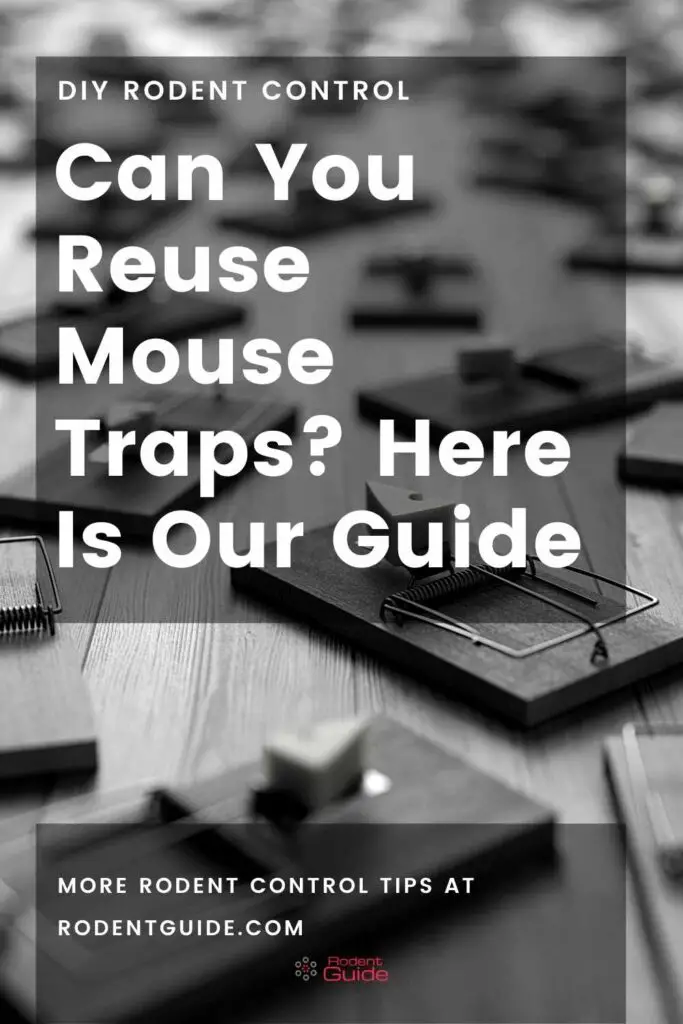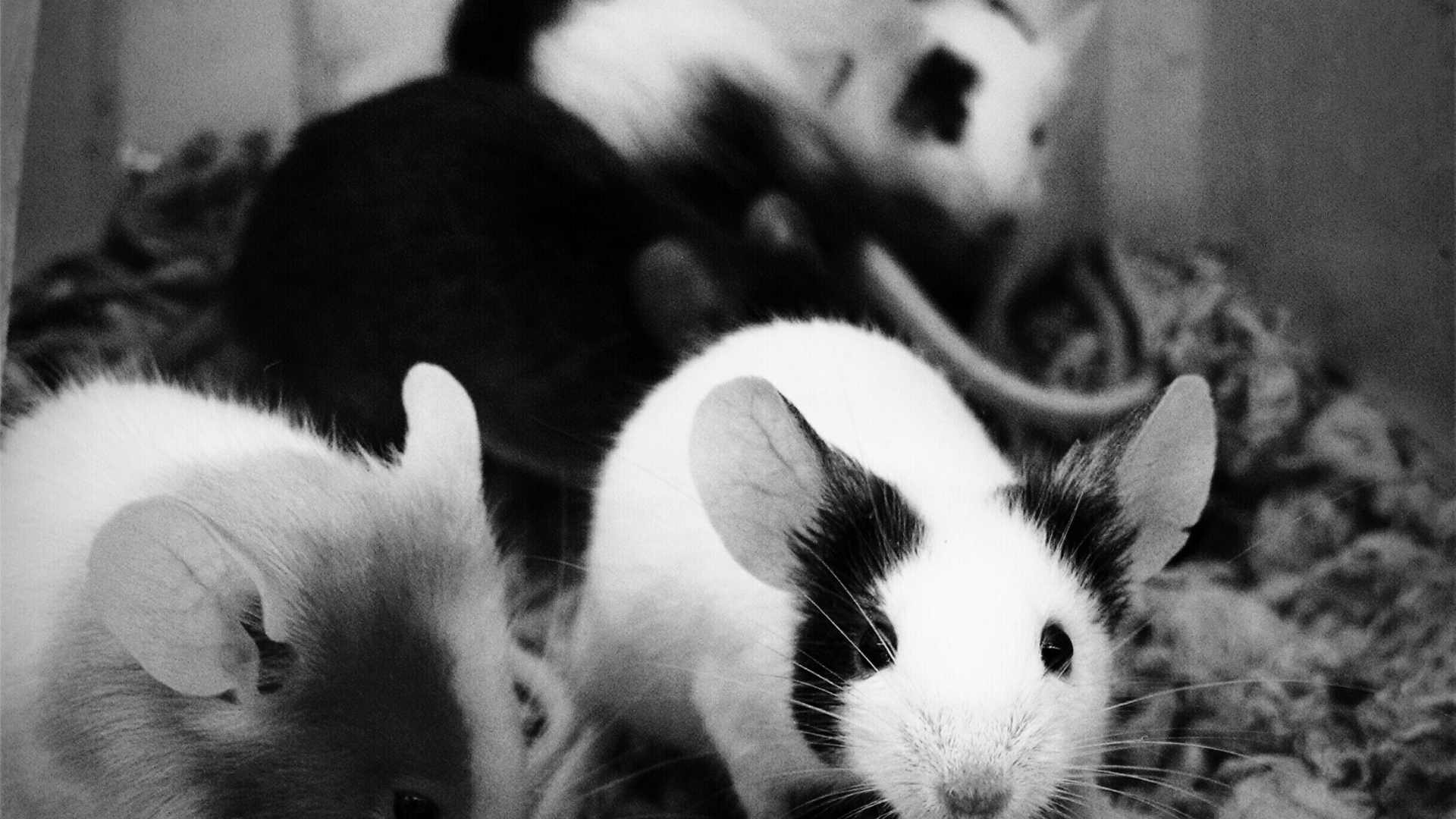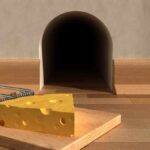The short answer is yes; you can reuse mouse traps.
Most homeowners prefer reusable mouse traps because they are economically better. However, it is never enough to use a reusable mouse trap; you need to understand how to clean the trap, wear gloves, and so on.
With different types of mouse traps, it can be confusing how to take proper care of the trap.
Whether it is a good practice to reuse mouse traps, the end goal is to get rid of mice in your home.
Here is our guide for reusing a mouse trap

Cleaning the Mouse Trap

The critical thing about reusable mouse traps is their maintenance. The way you maintain it would determine how long you can reuse it. While some are proven effective after reuse, it does not apply to all types of traps.
However, to avoid spreading mouse-transmitted diseases in your home, you must clean the trap thoroughly.
If you don’t know how to clean the mouse trap, here is a straightforward way of cleaning a reusable mouse trap.
Prepare every required material ahead of time.
Before you consider picking up a used mouse trap, it is essential to wear a protective glove or gear. This will protect you from bacteria and other pathogens transmitted via mice.
Ensure to use a glove when removing the mouse from the trap. You can use several items of protective gear and cleaning materials for this task.
Here are a few things you need for your cleaning process:
- Disposable sponge
- HEPA face mask
- Long-sleeved shirts
- Disinfectants
- Trash bags
Disposing of the dead mouse
Assuming you have used a snap trap or another trap designed to kill, you must dispose of the dead mouse.
You need to clean up the rodent carcass! A dead mouse odor is no fun!
Before removing the dead mouse, disinfect the surroundings before carefully picking up the corpse from the trap, wearing strong gloves.
Once you finish the gloves, ensure you throw them away in the trash.
How to clean the leftover residues
Once you remove the dead mouse, you might discover some leftovers, such as saliva, blood, or bodily fluids, on the trap.
To clean it, you need to use water and soap. Ensure you wear gloves to minimize contact with the residue.
In addition, it will help avoid any bacteria transmission from the mouse poop/urine/blood.
Using the gloves, scrub the mouse trap using a disposable sponge. Once all the residues are washed, you can dry the mouse trap before using it again.
Note: Removing the residues and fluids is compulsory because it affects the effectiveness of catching another mouse.
If, after cleaning thoroughly, it doesn’t catch rodents, you need to reposition the bait.
Disinfecting the trap and your home
You might still experience an unpleasant smell even if you have removed and cleaned the trap.
You may be tempted to vacuum or sweep the area. However, it doesn’t remove the dirt; it kicks the dust into the air.
Therefore, the best solution is to clean the entire area using an enzyme cleaner. Ensure you allow it to stay for 15 minutes to break down any biological material around the house.
Clean the area using paper towels to remove any fur from the dead mouse. In addition, use a disinfectant to spray the entire area to eliminate any foul smell. It also helps to ensure the area is clean.
Why Use Reusable Mouse Traps?

When it comes to reusable mouse traps, people have conflicting opinions.
Some believe reusing mouse traps makes it less effective over time, whereas others think it does work perfectly.
Whatever side you decide to stand on, here are a few benefits of using reusable mouse traps in your home.
Cost-effective
Most homeowners don’t want to spend much money to get a new mouse trap. Therefore, a reusable mouse trap is cost-effective as you save money instead of buying another trap.
Nowadays, you will find both disposable and reusable mouse traps on the market, allowing customers to choose whatever suits them best.
Scent Familiarity
Mice have a keen smell that enables them to find their fellow mouse.
Using a reusable mouse trap helps maintain that faint mouse smell that other mice can pick up. Once a mouse smells the odor, it gives a sense of assurance that the device is safe.
They are more likely to approach reusable traps than new traps.
Reliability
Besides the cost-effectiveness and scent familiarity, another essential benefit of using reusable mouse traps is their reliability.
Most homeowners prefer using a trap that has caught mice previously rather than trying a new one.
Reusable traps are beneficial as long as you keep them clean and functional. All you need is to keep the trap tidy and ready for subsequent use.
Disadvantages Of Using Reusable Mouse Traps

While the benefits might outweigh the drawbacks, there is a need to mention some disadvantages.
For instance, the blood can spill over the floor and throughout the trap using a snap trap. It makes it become a breeding place for germs and bacteria.
In addition, you need an intense cleanup for a reusable mouse trap. Besides, there is also the issue of wear and tear when using a mouse trap.
The more you reuse the trap, the less effective it can be.
Types Of Reusable Mouse Traps

Currently, you will find different reusable mouse traps on the market because of the benefits mentioned above.
However, the best option is to choose a mouse trap that only leads to minimal bleeding. Overall, live mouse traps are preferably good for reusable purposes since one can easily clean them.
Here are a few types of reusable mice traps for your home.
Further reading: How to set a mouse trap.
Snap Traps
The snap trap remains the best traditional way of dealing with mice in your home. Rather than buying a wooden snap trap, it is preferable to purchase a plastic one since it is easy to clean.
However, the snap trap uses force to trap and kill the mouse, contaminating nearby areas.
Remember, if you have any toddlers or pets at home, the snap trap isn’t the best option because it can cause injuries to your pet or kid.
In addition, you need to monitor the trap since any movement easily triggers it. You must reset and re-bait the trap to catch any mouse in this situation. Don’t forget to place the trap in a good location!
Peanut butter is good bait for mice, by the way.
Electronic Traps
Another option is electronic traps, which electrocute the mouse.
Electronic traps are usually safe if you have pets and children in your home, although you should follow the instructions that come with the trap.
Furthermore, they come with a blinking light to indicate a mouse is inside. However, the downside of electronic traps is that they are pretty expensive.
They are highly reusable and run on electricity.
Therefore, to avoid malfunction, the trap must always be dry.
Live Traps
The last set of reusable traps is the live trap that catches those annoying rodents.
The Victor M310S is an excellent live catch trap.
Just place a good bait that attracts them into the trap as the door shuts against them. For live traps, metal cages work better since they provide adequate room for the mouse to move and breathe.
The only drawback is that you must make sure to release the mouse far from your home.
Otherwise, it will come back in no time.
Glue Traps
Please do not use glue traps!
Conclusion
The long and short of it is that you can reuse a mouse trap. If you clean it, the trap is ready to use again and again.
As the trap ages, you should perform regular tests before setting it after every catch.
Make sure you bait it and set it to catch the next mouse. Do not apply too much bait, though, that is a common mistake.
Good luck!








